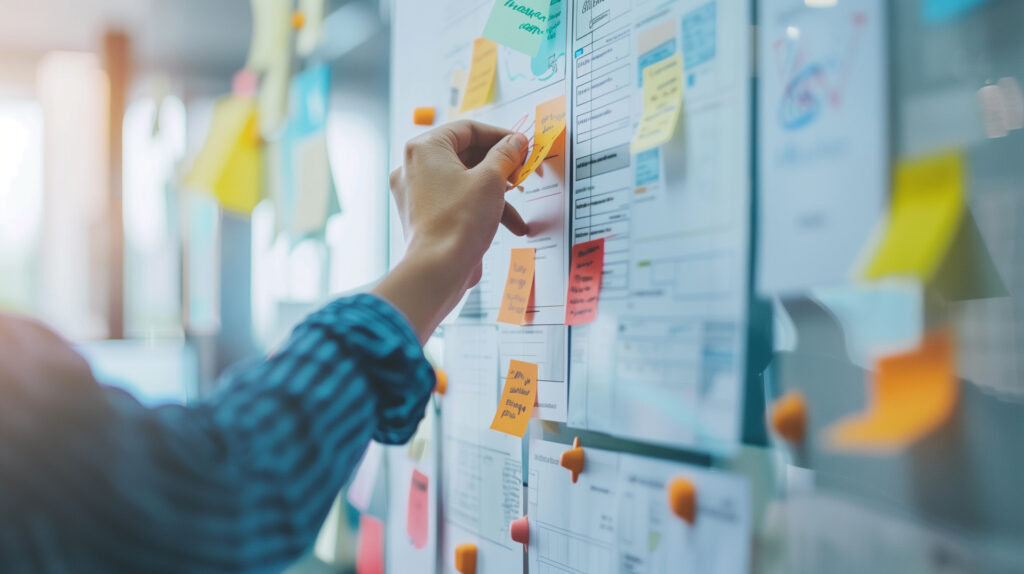1. Business Challenge
In the early 2020s, a large electric utility saw a significant increase in customer work, such as new connections and upgrades to existing services. This increase in customer demand was impacting customer service levels, including how long it took to design the customers’ service requests and execute the work. It also meant that electrical grid maintenance work was at risk due to the utility’s field resource capacity constraints.
The Engine Room was engaged to work with the utility’s planning and scheduling teams to assess the current state, identify opportunities, develop recommendations, and implement the changes. The primary goals included improving the utility customer’s experience and the completion rate of all work across the different work programs.
2. Actions Taken and Tools Used
Following a thorough discovery process, which involved interviewing employees throughout the organization, reviewing existing processes and system configuration, and observing planning and scheduling in action, The Engine Room recommended and implemented the following:
| Establish Role Clarity for Planning and Scheduling Positions: The Engine Room found that although the utility had standard position titles in their different planning and scheduling centers, each of the teams operated differently and often with a lack of clarity around what each position was responsible for. Therefore, an initial focus was to create distinct roles with clear handoffs. It was also recommended that planning roles focus on job planning functions such as creating work orders, bundling work, securing materials, etc. Whereas the scheduler role should focus on scheduling design and field construction work. Customer roles were also created to guide customers through the entire life cycle of their work. |
| Create Visibility of Work Through Dashboards: It was discovered that while planning and scheduling employees would diligently work on the next piece of work in their queue, employees (and their supervisors) lack a readily accessible view of all the work in their queues and the status of work orders in the process of being planned, scheduled or executed. Therefore, an initiative was undertaken to create accessible dashboards that allow employees, their supervisors, and managers to see the status of all work and identify healthy or unhealthy trends so that they can be actioned. Different dashboards were designed to support different views into the process, such as a dashboard that provided a scheduler-friendly view into the status of crew schedules, while a different dashboard shows the time it is taking to complete key phases of the planning and scheduling process. |
| Increase use of Core Systems: The Engine Room discovered that over many years and for many reasons, a significant number of spreadsheet ‘workarounds’ had been created by employees who preferred to use spreadsheets over the utility’s ‘official’ software platforms. The Engine Room recommended moving away from manual spreadsheets that are outside core systems to improve visibility of work, reduce manual errors and reduce duplication of effort due to multiple sources. |
| Improve Work Order Hygiene: Improve the accuracy and quality of key fields and data throughout the planning and scheduling process to inform work execution, reduce rework, and ensure proper closeout and billing of work. |
| Improve Planning and Scheduling Fundamentals: Teach and coach on planning and scheduling best practices, such as how to schedule time-sensitive work vs flexible work and how to adjust to inevitable changes to the schedule. An important principle for scheduling utilities is to emphasize using good judgment when creating and adapting a schedule instead of relying on hard rules. This allows for the schedule to represent the true nature of the work better and provide a more realistic schedule for work execution. |
| Establish New Management Systems: Create a regular meeting cadence where leaders report on results, risks, and actions to ensure alignment throughout the team and focus on the right areas. Utilize new dashboards to inform decisions. |
| Improve Work Execution with Field: Coach the planning and scheduling team on working effectively with the field crews by seeking input on plans and schedules and informing the field crews about upcoming work and key commitments. |
| Leadership Coaching: Provide coaching to the planning and scheduling leaders on techniques to implement and sustain the changes in practice and strengthen the culture of accountability within the team. |
3. Business Results
The utility saw several benefits through training and coaching in planning and scheduling best practices, role clarification, process, and system improvements. These improvements contributed to a $10M saving for the planning and scheduling department from improved productivity.
The benefits included improvements in the quality of tactical job plans and schedules. That quality improvement was due to a combination of incorporating valuable input from the field crews who do the work (their expertise around the work requirements, condition of the assets, and terrain) in combination with planners and schedulers with greater capability and confidence in how to do planning and scheduling. Improving the quality of plans and schedules decreased the rework and time wasted by field crews having to adjust plans before doing the work.
The immediate benefits of the process and system changes included increased visibility into the work in the planning and scheduling process. Enabling planners, schedulers, field crews, their supervisors, and managers to all see the status of work in the planning and scheduling workflow not only meant that crews were better positioned to prepare for future work, but it also meant the client was able to make proactive decisions on where to prioritize their resources to meet customer needs best and complete high priority work.
In additions, dashboards that supported measuring how long it takes to complete technical designs allowed the utility to make better adjustments to resource plans and provide technician coaching where needed. As a result, the utility is now better positioned to identify potential customer issues and be proactive in how they respond, supporting its mission to improve its customer’s experience.
To anchor these changes, Engine Room provided leadership coaching and workshops focused on creating a culture of accountability. This has helped leaders at all levels understand how to set expectations, observe and monitor, and provide effective feedback to improve performance with their staff.




